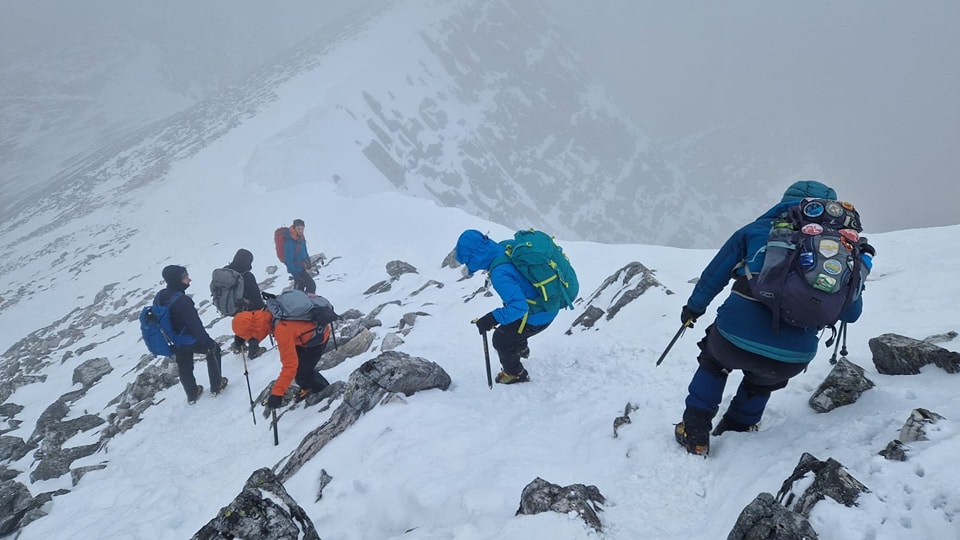A guide to selecting the right hiking boot

A guide to selecting the right hiking boot.
As the warm, dry summer gives way to the cooler and wetter conditions of autumn, you might be considering replacing your hiking boots.
However, how do you make sense of the bewildering array of styles and designs available?
The first thing to consider is the type of terrain are you likely to be using your footwear on.
Footwear is now produced to suit all grades of hiking, from simple trails to high altitude mountains, and understanding this will help you narrow down your selection considerably.
In the better stores you may see boots classified as either B0, B1, B2 or B3. This is simply a measure of their stiffness, and hence their suitability for high mountain use.
All hiking boots will be B0, low stiffness, and this makes them ideal for walking in as they have a reasonable amount of flexibility in the sole.
B1 and B2 boots have increasingly stiffer soles and are used for climbing and mountaineering.
B3 boots are often made of plastic with a good deal of insulation and are designed for high altitude climbing in the Greater Ranges.
In the ever-increasing push for sales, manufacturers now produce footwear to cover every possible usage and terrain type.
To simplify it down a little let’s look at the five most common styles:
Trail Shoes
Trail shoes are lightweight and comfortable, with a flexible and soft sole, they are low cut with no ankle support. They look very much like runners and perform in a similar fashion. They might also have a waterproof liner which would be effective in wet grass and small puddles.
These shoes are only suitable for walking trails and made up paths in dry and warm conditions, and the shallow sole pattern reflects this. Their flexibility and lack of ankle support means that they certainly would not be suitable for open mountainsides and rocky terrain.

Mid -height Lightweight Boots
This is a very common style of boot found in the outdoor store footwear departments. They are lightweight, comfortable and require no breaking in, they can be worn straight out of the box. For this reason, they are very popular as a first-time hiking boot. They would be classified as B0.
They will be manufactured from stitched fabric with maybe some leather in parts, and have a Gore-Tex or similar internal membrane to make them waterproof.

Fabric and leather boots make good general purpose hiking footwear
The ankle ‘cuff’ will be what is called ‘mid-height’, this allows for a degree of ankle support without feeling too stiff and restricting. It also protects your foot from (shallow) water seeping over the top and twiggy debris and small stones getting into the boot.
The boot will be flexible and soft, not ideal for rough mountain terrain, and the sole pattern can range from quite shallow to a much more aggressive pattern.
These boots are best for summer use in upland areas, hill paths and easier mountains in Ireland and the UK. I have used this type of boot in summer alpine conditions, the Atlas Mountains and even on Kilimanjaro.
Full-height general purpose Mountain Boots
This type of B0 boot has a higher ankle cuff to support the foot, the uppers will comprise some stitched fabric but may predominantly be made of leather for improved weather proofing and ruggedness. It will also have an internal waterproof membrane.
It may have a rubber ‘rand’ around the edge to protect the foot from bumps and guard the boot against abrasion on rocks.
The sole pattern will be quite aggressive, with a distinct heel step, which serves to give better grip on slippery ground and in descent. The boot will be a little stiffer and heavier as a result, but still with enough flexibility to make it comfortable to walk in.

Good leather boots will keep out water for longer.
This boot type may be worn straight from the box, but would benefit from a little breaking in before you took them out on a big day.
They are good for all upland terrain in Ireland and the UK, both on and off trail. They will keep water out for longer than a fabric boot, and would suit those hikers who head across open mountainside and moor in most weather conditions.
They would not be suitable for full winter conditions where there is a lot of ice and snow about, and would generally be too flexible to take a crampon.
Mountaineering Boots
Designed for rocky alpine ascents, scrambles and difficult mountain terrain, this style of boot is similar to the mountain boot above. It would however be a good deal stiffer and more supportive, and will be in the category of B1 or B2.
This could make them uncomfortable to walk in over a long day and therefore they would not be ideal as a hiking boot, though some hikers find the extra stiffness a help when suffering from foot problems.
They will have a heel notch to take a crampon for winter use, and may be cut a little tighter in the toe box to allow for a bit of ‘feel’ when climbing.

Winter mountaineering conditions require specialist winter boots.
Winter Hiking Boots
Usually classified as B2, these boots are solidly made, stiff and with an aggressive sole pattern. A high ankle cuff is standard, as is a waterproof membrane and some insulation to keep the foot warm.
Specifically designed for winter use they will have fittings for attaching crampons, and a large ‘rand’ for protection.
Heavier than the other styles here, they are made for use in snow and ice in the higher mountains of Ireland and the UK.
Russ Mills is the founder and owner of Mountaintrails.ie, a guided hiking and mountain training business based in Dublin.
